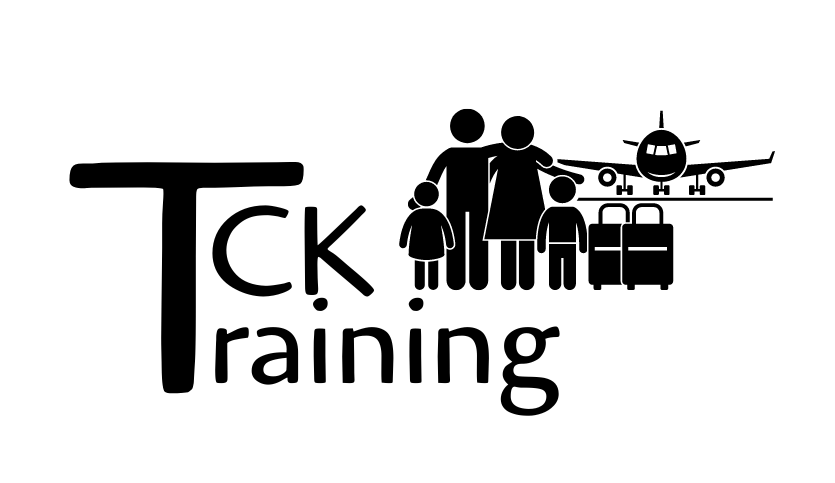Caution and Hope for Missionary Kids
When TCK Training released our white paper, Caution and Hope: The Prevalence of Adverse Childhood Experiences in Globally Mobile Third Culture Kids, we knew we were only beginning to scratch the surface of what we could learn from the data we had collected from 1,904 individuals who completed our 2021 survey on developmental trauma in globally mobile Third Culture Kids. This is part of a series of blog posts that looks a little deeper at certain sub-groups represented in the data.
Caution & Hope for Missionary Kids
In our survey of nearly 2,000 people who grew up internationally, we discovered that 17% of those who grew up in missionary families – nearly 1 in 5 – were at high risk of adverse outcomes in adulthood. In this blog post, we go through the data from our white paper "Caution and Hope" that applies specifically to missionary kids: things that are hard to hear, along with what we can do to cultivate long term thriving for children growing up in the missions world.

Slightly more than half the respondents to our survey (1,068 individuals) identified primarily with the mission sector. There were some differences in the survey results of Missionary Kids and their reported Adverse Childhood Experiences. In this blog post we are going to look at these results and how they impact care for missionary kids.
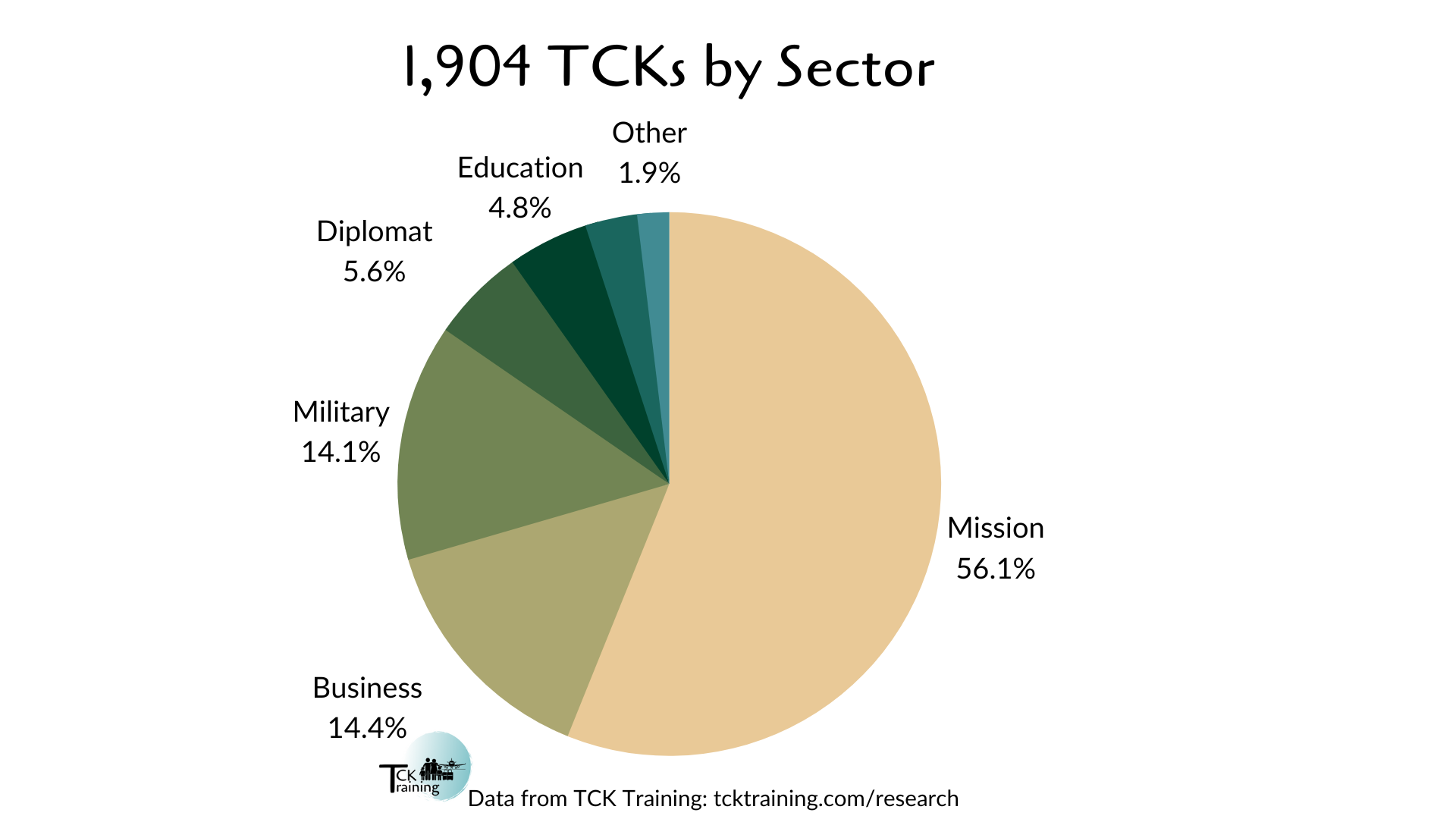
Age and Education
Nearly half the mission kids surveyed were born after 1990. This was in line with most sectors, other than the military sector (which skewed older).
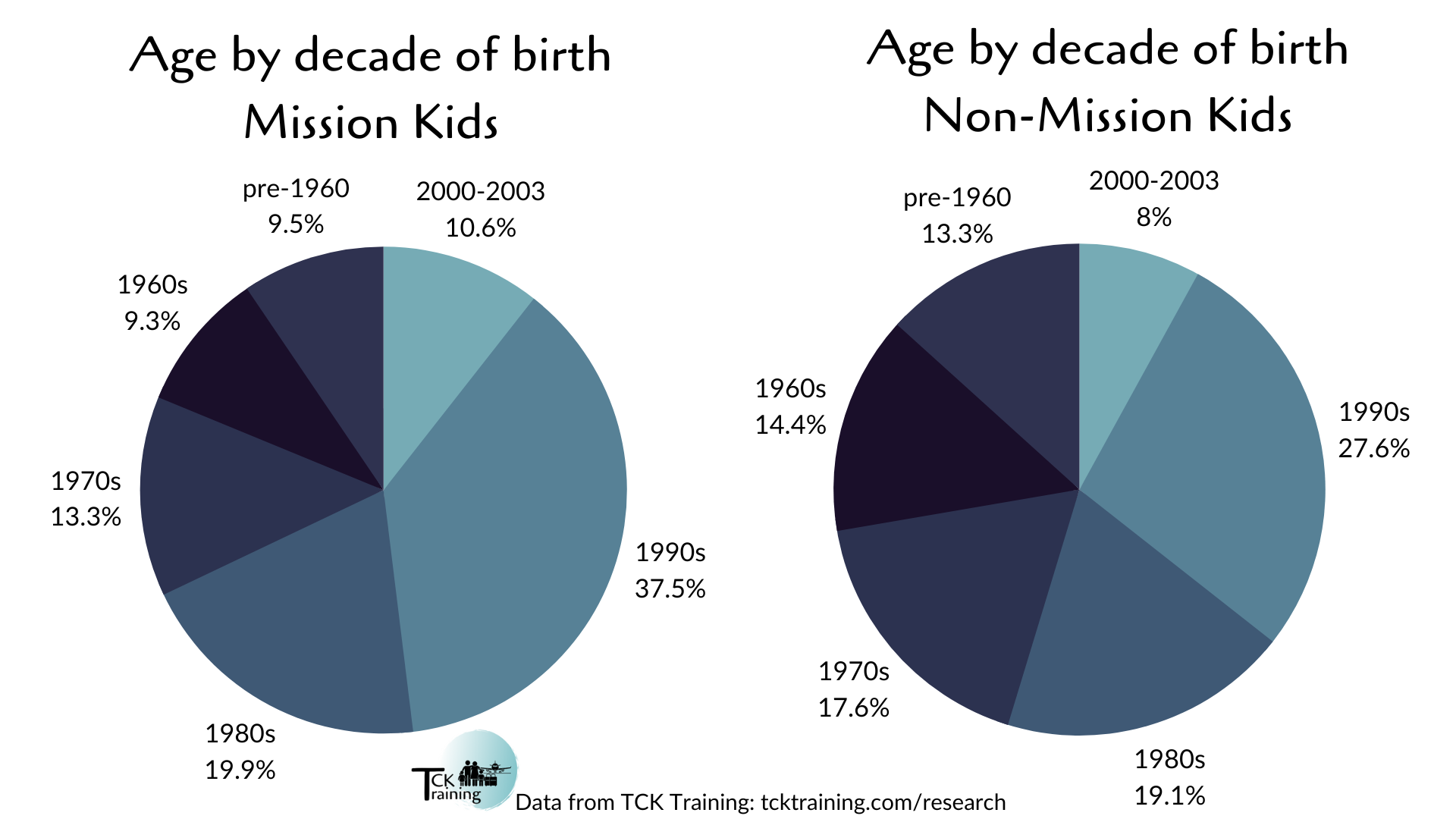
Mission kids had a very different distribution of core educational experience to other sectors, however. While 87% of the non-mission group attended either local school or international school, these two educational experiences made up only 26% of the mission group.

Caution and Hope:
The Prevalence of Adverse Childhood Experiences in Globally Mobile Third Culture Kids
Mobility
Overall, mission kids experienced more mobility than TCKs in other sectors. They were slightly more likely to live in more countries, and a higher percentage of mission kids experienced high location mobility and high house mobility.
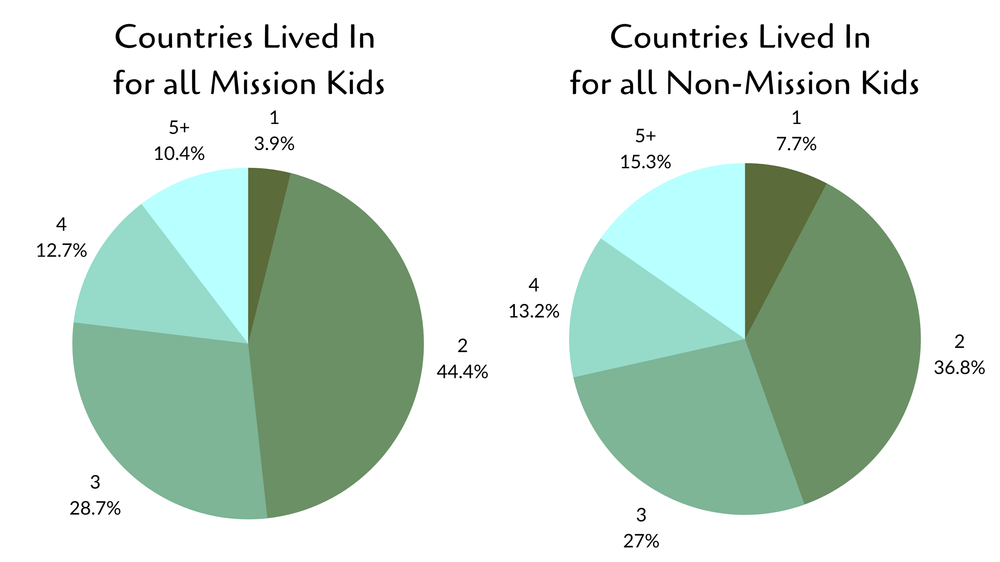
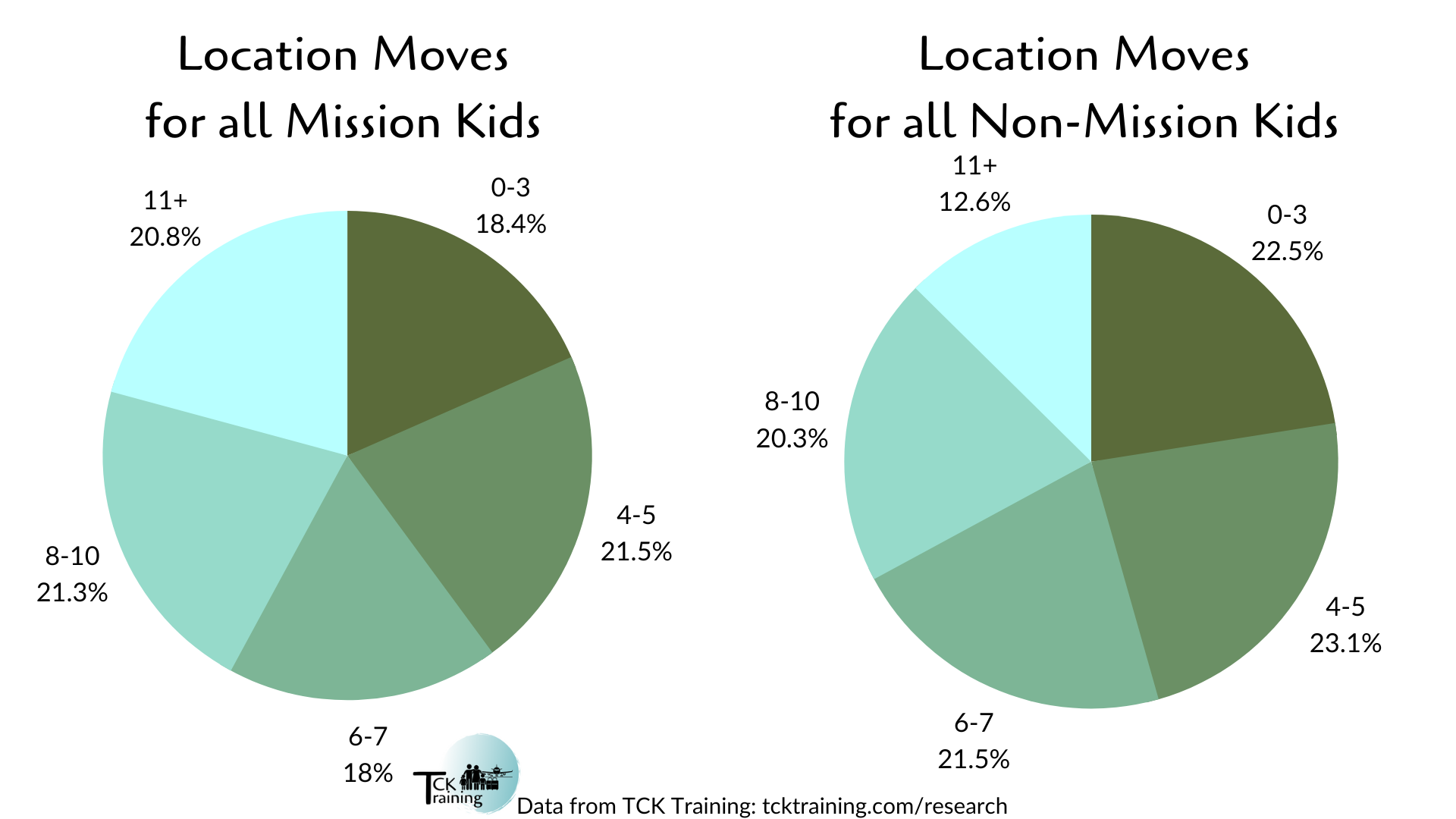
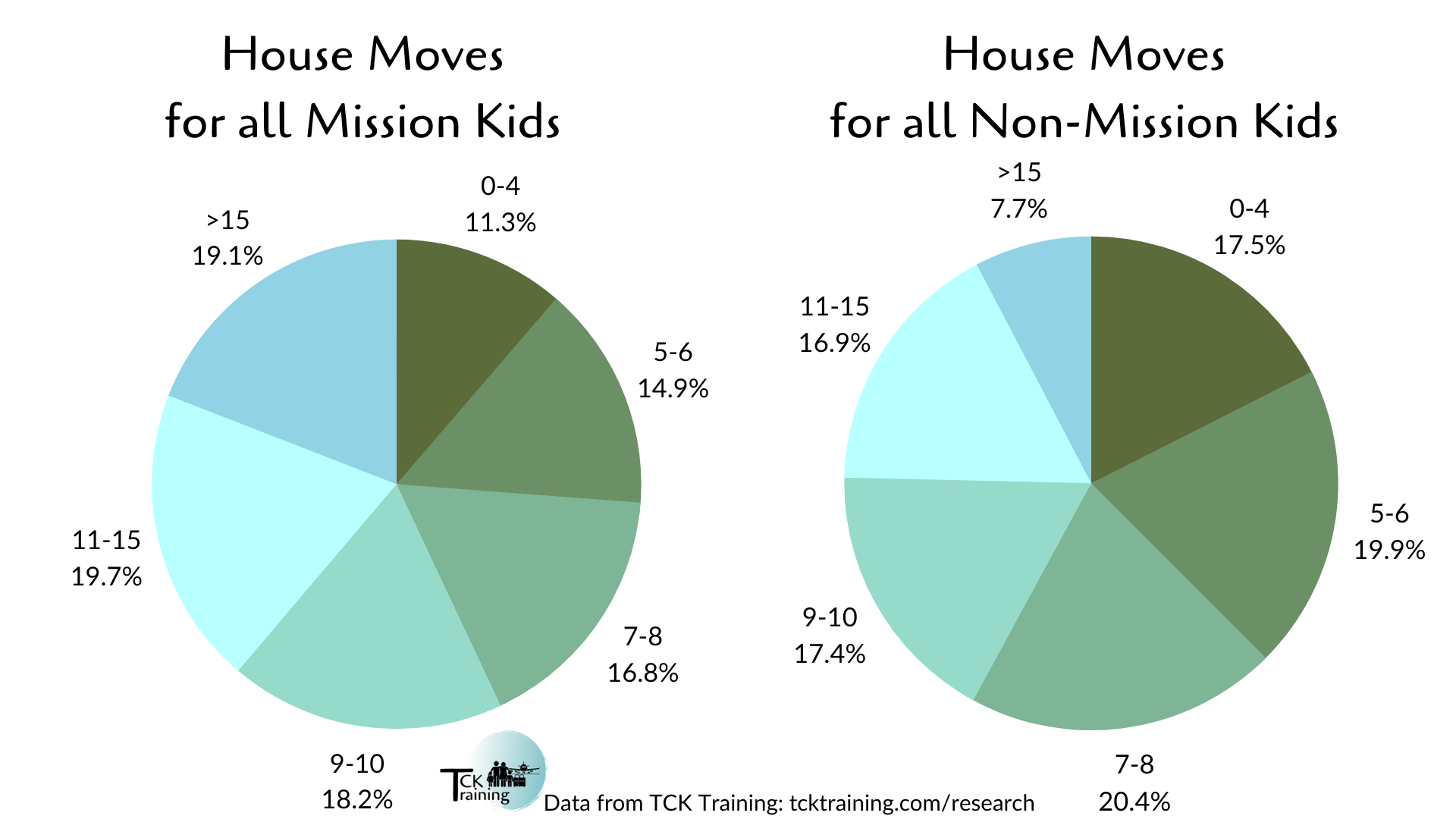
Diplomat kids were the only sector to experience higher country mobility than mission kids, and military kids were the only sector more likely to experience high location and house mobility than mission kids. The high mobility experienced by mission kids is important to note, as we discovered in the course of our research that high mobility was correlated with higher risk for TCKs.
Risks for Mission Kids
Our study focused largely on Adverse Childhood Experiences, a well-researched field in which a score between 0-10 is assigned to quantify the types of childhood trauma an individual experiences. Numerous studies have linked ACE scores of 4 or higher with higher risks of various negative behavioral, psychological and physical health outcomes - such as mental illness, cancer, and addiction. The largest study of ACEs was the CDC-Kaiser study of 17,000 Americans, in which 12.5% had a high risk ACE score of 4+. Studies in the UK and Philippines found 9% had a score of 4+. Our survey of TCKs found 21% with a high risk score. While mission kids had high risk ACE scores at a lower rate of 17%, this is still significantly higher than found in the monocultural studies.
When high mobility is added, the percentage experiencing high ACEs goes up. High mobility is correlated with high risk for TCKs. And as seen above, mission kids were more likely than most other TCK sectors to experience high mobility.
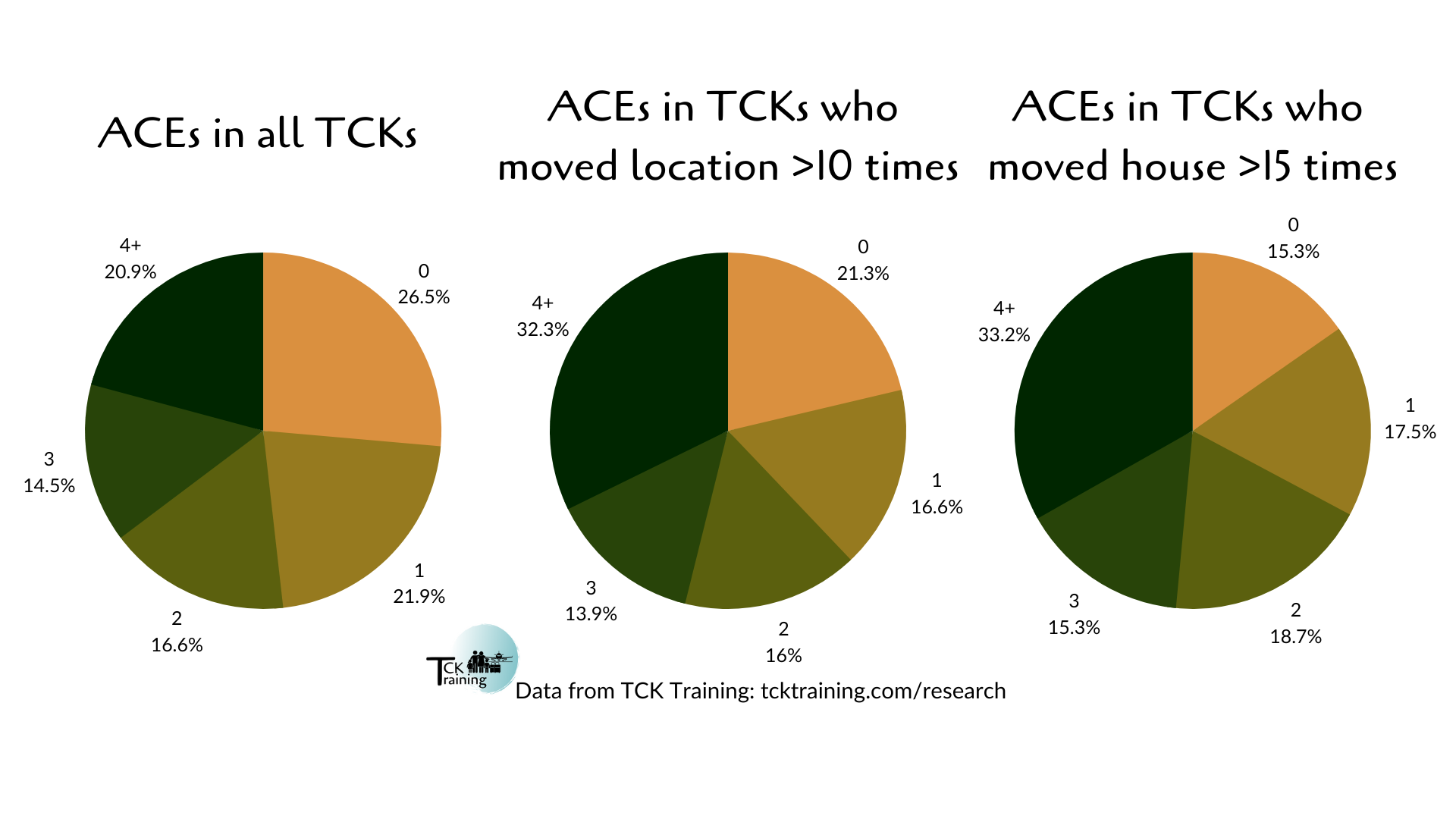
One other detail noted in the white paper is worth discussing here. When the ACE scores of mission kids were divided up by education, certain patterns emerged.
Caution and Hope:
The Prevalence of Adverse Childhood Experiences in Globally Mobile Third Culture Kids
In fact, as seen in the chart below, mission kids who attended international schools had only an 11% rate of high risk ACE score, lower than the CDC-Kaiser study of 17,000 Americans (though higher than in other countries, such as the UK and the Philippines, which each recorded a rate of 9%). Homeschooled MKs, however, had double the rate of high risk ACE scores.

As stated in the white paper, this is only showing correlation and not causation. It does not mean that homeschooling causes higher levels of Adverse Childhood Experiences. But it is indicative of possible risks, just as high mobility is. We surmised in the white paper that “the same reasons mission families choose homeschooling over international schooling (or another option) may lead to additional ACEs.For example, when living in a remote area there may be limited options for education, but perhaps greater risk of additional ACEs due to the environment."
Positive Childhood Experiences
We now know many mission kids are at risk. How are we going to respond to that risk?
Our paper is titled Caution and Hope because while these statistics certainly give pause for thought, they are not the end of the story. Existing research demonstrates that even when high ACEs are present, the risk they represent can be mitigated through Positive Childhood Experiences (PCEs).
Caution and Hope:
The Prevalence of Adverse Childhood Experiences in Globally Mobile Third Culture Kids
An individual with a high ACE score can still thrive, and there are things we can do to provide these protective factors for children under our care. That said, providing these PCEs can be a bit more difficult when you are moving frequently, or living in a transient community where the friendship you have invested in move away from you frequently. More than half the PCEs involve the fostering of community relationships.
Knowing how to grieve these losses well (especially through debriefing and unstacking your grief tower, and those of children you care for) is a key part of continuing to engage well in relationships and communities that will buffer children’s long term health. TCK Training is founded on principles of preventive care, made accessible to parents, caregivers, and organizations. We are here to help you, no matter where you are in your preventive care journey.
Check out this list of Related Blog Posts, or click through the tabs to find recommended resources according to whether you're a caregiver or parent of missionary kids, or you're an adult missionary kid yourself!
For Caregivers of Missionary TCKs:
Caregivers, as you read these statistics you may be feeling both motivation that there are needs you want to fill...and overwhelm not knowing how or where to start. You are not alone.
We've personally experienced how nerve wracking it can be to have the big and important role of caring for MKs ahead of you, but not feel equipped for it. Which is why we do what we do, we want you to experience the relief and confidence of being equipped and supported!
Get equipped with certifications and trainings
- Pathways Certification (for those in leadership and program development)
- Groundwork Certification (for those working on the ground with MK families
- Standards of Missionary Family Care Training
- Churches Supporting Missionary Families
Other resources
- FREE Biblical Foundations for MK Care (booklet)
- TCK Biblical Conversations (curriculum)
- Biblical Foundations for MK Care (workshop)
- Discipling Missionary Kids (workshop) ...or get access to both workshops plus 80+ more AND monthly group coaching with a Caregiver membership
For Parents of Missionary TCKs
Reading these statistics can be difficult. We know how much you love your TCKs and you want what's best for them. So please know there is hope!
We do this research because "when we know better we can do better" (Tanya Crossman) and we believe that together we can raise up a generation of healthy TCKs.
We design our resources to equip parents and caregivers to support TCKs according to the needs found in our research! If you're not sure where to start, here's a few we would recommend:
- FREE Biblical Foundations for MK Care (booklet)
- TCK Biblical Conversations (curriculum)
- Biblical Foundations for MK Care (workshop)
- Discipling Missionary Kids (workshop) ...or get access to both workshops plus 50+ more AND monthly group coaching with a Parent membership
For Adult Missionary Kids
If you resonated with a lot of these statistics, we want you to know that you're not alone, and we don't want you to carry this alone!
Here's some resources we would recommend specifically for you:
- Unstacking Your Grief Tower (book)
- Unstacking Your Grief Tower (self-guided course)
- Unstacking Sessions (personalized coaching)
Recorded Workshops
- Navigating Christianity as an Adult MK
- Adult TCKs: Strengths & Challenges
- Adult TCKs: How to Talk to Your Parents about Childhood Trauma
...or get access to all three plus 20+ more with an ATCK membership
